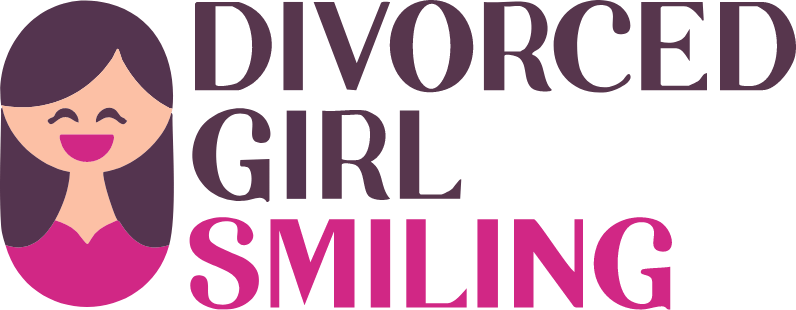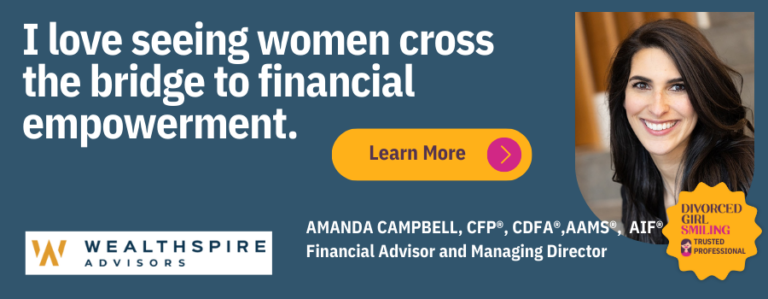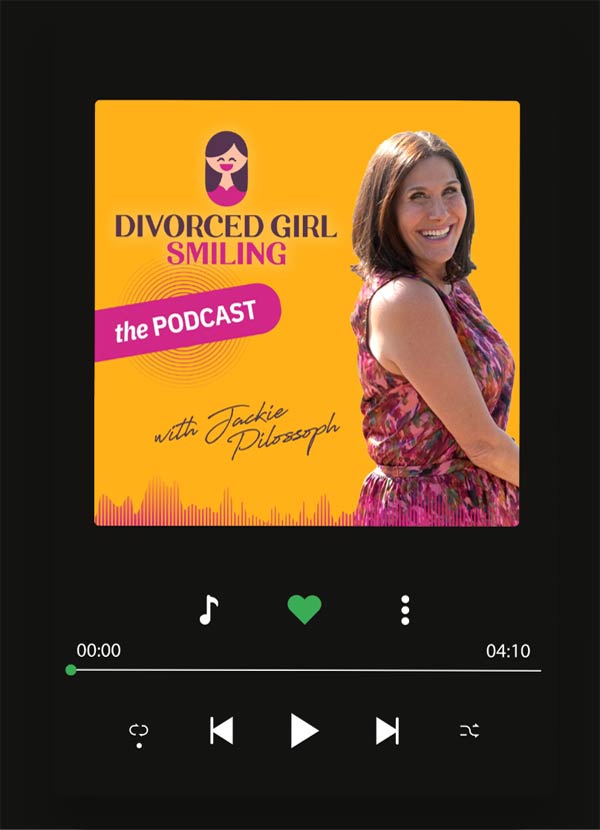Do you want a life of wealth and abundance? I’m not sure one person on earth would turn that down. Well, what if I told you two things: one, you deserve a life of wealth and abundance, and two, I’m going to give you some baby steps to take that can help you achieve it.
The idea of baby steps is that they’re so small you can’t fail. They’re such itty-bitty changes in your life that can truly happen overnight with a little bit of forethought. They shouldn’t feel overwhelming and shouldn’t be time-consuming. Eventually, the forethought needed to implement these slight mind shifts won’t take any forethought at all; they’ll become habits. The goal of getting to wealth and abundance is for you to take charge and feel empowered by your wealth, not to continue in a state of crippling anxiety, confusion, or wonderment by it.
Baby steps to the wealth and abundance you deserve:
Baby Step #1: Change Your Narrative
This one really has to do with how we talk to ourselves about wealth. I constantly hear women say things like: “I’m not good with numbers,” or “I’m not smart when it comes to understanding my wealth,” or “I just let my partner take care of the finances because I wouldn’t even know where to start.” Ladies, this is the problem! Until we believe that we are smart about our wealth, and we do make good decisions when it comes to money, men will continue to have the upper hand in investing, pay, and overall wealth decision-making.
What if we changed our narrative from: “I’m not smart around money” to “I’m still learning how to manage my wealth?” Even Michelangelo, inarguably one of the most impactful artists the world has ever seen, is credited with famously saying: “Ancora imparo,” or “I’m still learning.” Even with all he had accomplished: the David, the ceiling of the Sistine Chapel, The Creation of Adam, I could go on and on, this expert artist still believed that he was in a constant state of learning. Shouldn’t it then stand to reason that we’re all still learning?!
CASE STUDY: LISA
I want to tell you about Lisa, sixty, who came to see me for guidance with her finances after a nasty divorce from her husband of thirty-five years. It was a brutal divorce, complete with a long-drawn-out litigation, name calling, and a fight over every single last dollar. Now she had to figure out what to do with the wealth that she was in charge of for the first time in her entire life. Her ex-husband had always taken care of the finances—which proved to be quite the hurdle when it came to dividing assets during the divorce because Lisa truly had no idea what wealth they had or where it was.
In the beginning of our sessions together, no matter what we started talking about in relation to wealth, she’d say, “Ugh, I just don’t understand. I’m so bad at this stuff. This is so embarrassing!” Whether it was talking about her monthly budget, as she was now living on alimony, or talking about her accounts and how I had invested them for her in an effort to meet her goals, or talking about the long-term implications of her financial plan, she was constantly put off by the conversation and relied on self-deprecating humor to get through our sessions together.
After giving her the space to work through these emotions, I finally looked at her during one of our meetings and said, “Hey, you are smart with your money. You’re still learning, and this is all new to you. How about instead of saying: ‘I’m so bad at this stuff’ we say, ‘I’m still learning this stuff’ and know that I’m right there with you. I’m still learning about wealth every single day too.’”
I know it sounds hokey, but it’s amazing how the tone and energy of our meetings changed when she started leaning in to this new narrative and vocabulary. She no longer relied on self-deprecation and a cheap laugh to get through our sessions together, and started to really open up and engage in our conversations about her wealth. She even started to smile when she came into my office and got in the habit of saying “I’m still learning about that. Do you mind explaining it to me again?” when she felt stumped on something. She is now a client I absolutely love seeing, and on days I see her name on my calendar, I get excited—it’s like hanging out with a friend.
She hasn’t said she’s “bad at wealth” in such a long time. It’s honestly hard to remember that sad, broken, lost woman who came into my office three years ago. She understands her wealth and tells me that when she leaves my office she always feels a recharged sense of empowerment around her wealth. She no longer stresses about money and knows that if she ever has a question about it, she can simply pick up the phone and call me. She is still learning about her wealth. We’re all still learning. She’s learning with the confidence of an expert artist—just like Michelangelo.
Baby Step #2: Think Before You Spend
I know, I know. I probably sound like your nagging spouse, or frugal friend, or overprotective parent or sibling. But stay with me here, because we’re talking about baby steps and this is one you can master!
Kayla, forty-five, is mom to one handsome seven-year-old boy, Cole, and wife to a head executive at a large recruiting company in New York City. Kayla is a speech pathologist and her day includes driving from location to location doing in-home therapy with children under the age of five with speech needs. Her days are long and she is physically, emotionally, and sometimes spiritually drained after hours of crawling on the floor with babies teaching them to scoot, making funny faces with a toddler in hopes that they will mimic her back, or teaching parents sign language to help them communicate with their sweet, nonverbal, autistic child.
Did I mention that Kayla, her husband, Rick, and son, Cole, live in New Jersey and Rick works in New York City? He’s often gone and on the train by the time she wakes up and starts to get herself and their son ready for the day ahead. Kayla often rises, rolls over to check her calendar on her phone, sees the day is full of back-to-back appointments, and is up and at ’em right into grind mode: get up; get showered; get dressed; throw on some makeup; rouse her son; get him showered and dressed for the day; rush downstairs; feed the dog; throw a frozen waffle in the toaster for Cole; gather his backpack and homework from last night; make sure his school lunch account still has money in it; grab the waffle from the toaster; pick up the book bag, her work tote, and purse; put the dog in the crate; dash out the door; and the day has begun.
In all the rush and hustle and bustle of the morning, as she sits down in the driver’s seat of her SUV and makes sure Cole is all buckled in for the ride to school, she realizes this is the third day in a row she hasn’t eaten breakfast. She’s tried to skip breakfast before, but this always results in a skull-crushing migraine by her ten a.m. appointment. She knows that she’ll have to stop and grab something quick at her favorite large coffee shop chain right after she drops her kiddo off at school.
For the third day in a row, she pulls up to the drive-through window, orders her medium-size hot vanilla latte; a bacon, egg, and cheese biscuit; and a slice of lemon loaf for her midmorning snack. She’s not proud of what this means for her health, but she’s even more embarrassed when for the third day in a row the cashier tells her that her total comes to $17.36. Dutifully, she takes her credit card out of her wallet and passes it through the window to the smiling barista.
She hastily eats her breakfast biscuit and slurps down her latte while rushing to her first appointment of the morning. As the morning turns to early afternoon, Kayla has reached a moment of reprieve—lunch time. She has a few usual spots she frequents and today she decides she’ll hit her favorite salad joint. When it’s finally her turn to order, she chooses the southwestern chicken salad off the menu (she doesn’t have the headspace after the trying appointment to piece together a salad from the “make your own” side of the menu). She decides she needs caffeine since she’s on a bit of a crash after the vanilla latte this morning, so orders a Diet Coke to go with it. Kayla’s feeling proud of herself. A salad and a Diet Coke for lunch isn’t the worst lunchtime decision and, per usual, she swipes her credit card, followed by “Press okay” if $18.47 is the correct amount.
She takes some time to eat by herself at a small table and go over emails on her iPad. She usually finds this relaxing, but today she got a text from Rick saying he has to stay late to work on a pitch and that she and Cole should eat dinner without him. Her mood goes from relaxed to immediately grumpy, but she knows he’s been working on this pitch for days and he’s rarely late for dinner, so she decides to not let it ruin her afternoon. Besides, it’s been a while since she’s had a dinner date with Cole, so maybe they’ll skip the steak and broccoli she had planned for tonight and take him out to his favorite pizza place.
That night Kayla and Cole head to dinner at the pizza parlor and, after she chooses to add a Caesar salad, garlic knots, and an indulgent slice of tiramisu for dessert, the bill comes to $60.58. Kayla pays and leaves a 20 percent tip for the friendly waitress, making the total for mommy-son date night $72.58.
Kayla hasn’t thought twice about spending $108.41 on this random weekday. Life happens, right? Or, the ever famous, “cost of doing business.” Kayla hasn’t spent her money on anything crazy today. She needs to eat. But let’s get real—you’re reading this not because you want me to placate you and tell you that Kayla’s day was perfect and she was just doing her best, but because you want to change the way you think about mindlessly swiping the credit card on “life’s necessities.”
My purpose is to walk you through what happened here from a wealth perspective and help you to create your own baby steps to better navigate this day. We’ve ALL had this exact day in some form or another and we’ve all done exactly what Kayla did. But what if we took just one second to think about what we were spending our money on throughout the day?
Using Kayla’s day as an example, let’s now look at injecting one small thought. What if when she got to her favorite salad spot for lunch, she thought to herself, “I already spent money on breakfast today. I’ll skip the Diet Coke and have water instead.” Let me break this down for you. If Kayla doesn’t spend that extra $2.13 on a Diet Coke to go with her salad (and remember, she eats lunch out every single weekday since she’s on the road, so that’s two hundred sixty days a year), she’s saving $554 per year. That is meaningful money! Think about how much you could do with $554 extra dollars per year! All because you stop and think before you spend. The old adage is true: “Every dollar counts.” I can’t wait for you to read about Kayla’s slight mind shift in her daily routine from a health perspective too—the link between health and wealth is undeniable.
Baby Step #3: Remember, Money Is a Tool
This is another one that seems easy in concept but will force you to take control of your thoughts and feelings around money when you begin feeling stressed out or overwhelmed by it. I sit with clients all the time that are so obsessed with the numbers and how much wealth they have, but I’d argue that that’s not the question we should be asking at all. The question we should be asking ourselves is: “What values does having the wealth I deserve service?”
CASE STUDY: CHARLOTTE
Let me break this one down for you by telling you about Charlotte, a seventy-year-old widow who is getting ready to retire from her administrative position with her local county government after forty-five years. Charlotte has been widowed for thirteen years after a loving marriage to her late husband, David. They shared a wonderful, full life and raised three children together—all three of whom are grown and successful in their own rights and merits. Charlotte has two regrets when she looks back on her marriage. First, they didn’t get more time together. They were high school sweethearts and loved each other deeply until the day he quickly and suddenly passed from a heart attack. And they didn’t get to fulfill their lifelong dream of retiring together to a beach home in Delaware.
As we sat together in my office and reviewed her financial plan on the cusp of her retirement, Charlotte looked at me and asked, “Amanda, do you think I have enough money for someone my age? When you help other women who are as old as I am, do they have more money than me?” Ladies, if you’ve heard it once, you’ve heard it one million times: Comparison is the thief of joy. Also, and more to the point, who cares?! I get that people want to benchmark themselves against others to understand if what they’re doing is “right” or “normal,” but since money is a tool, there is no “right” or “normal.” There’s no way to benchmark yourself and your wealth against someone else’s. Sure, there are articles you can find that try to provide blanket benchmarks for wealth. We see the people who have mansions, fancy cars, and designer shoes, and we consider those people “rich,” but what about Charlotte? What if she realizes that all her hard work and saving toward fulfilling her own dream of buying that beach home in retirement is her version of “rich,” and that she’s the only benchmark she should be comparing herself to?
I’ll give you an example from my own life. Make fun of me all you want, but one of my favorite things to do on this planet is get together with my closest girlfriends, Michelle, and my oldest daughter, Riley, and do a girls wine and craft night. I know, I know—but it’s fun, and I honestly don’t know if I’ve ever laughed as hard as when I’m with these amazing ladies talking, crafting, and enjoying a new wine that one of us discovered. We don’t all make the same craft. Most of the time I want to paint something, like a cute saying on a wooden board or something seasonal (any other Christmas fanatics out there?), and one of my friends wants to build or create something from scratch. Because of this, we’ll end up at the “bring your own bottle” art studio in town. There, I can paint to my heart’s desire with all the wooden boards, stencils, and paints in their back room, and my friend can spend time at the glass-blowing station creating another sun catcher or jewelry dish.
The point I’m trying to make is this: Neither of us uses the same tools at all when we’re in the mixed-media art studio together. I’ll set myself up, as will the rest of our girlfriends, near her glass-blowing station with an assorted display of paints, different paint brushes, stencils, and a wooden board, and she is using a furnace, blow pipe, glass, tweezers, shears, and all the other fun and pokey tools she uses while she’s blowing glass. At the end of the night, after all the laughs, a couple of empty bottles of wine, and all the hard work that went into that night’s creation, we are all so happy with our end results. She leaves with her glass jewelry dish that she’s swirled with purple and will look perfect on her nightstand, and I leave with my red and green “Merry Christmas” sign to hang in the sunroom of my home where we put our Christmas tree every December. We’re both so happy with our end result—two completely different ideas of what we wanted to walk out of the studio with, two completely different sets of tools needed to create our projects, and two completely different completed projects that are both exactly what we individually wanted. And truth be told, we’re both in awe of what the other person has created!
Wealth can be viewed in the same way!
Back to Charlotte. What does it matter if she’s “on track” for someone her age? What does that even mean? I tell my clients all the time: a dollar is a dollar is a dollar—it’s what that dollar means to you that is the real question. A dollar is a tool to help you achieve the life you want. Charlotte’s retirement beach home in Delaware coupled with her specific monetary need for her expenses per month are very different from a woman who is a seventy-year-old widow that has been working toward a retirement mansion on a golf course in Naples, Florida, coupled with a monthly monetary need for expenses in the five-digit range. So, you see, when you lose sight of money being a tool to live the life you want, you are inviting comparison, and thereby inviting discontentment, into your thoughts and life.
Your idea of “rich” will always be different from someone else’s idea of “rich.” I personally don’t care for use of the word “rich” at all. Again, because it can be interpreted differently from person to person and carries varying connotations based on your background, your life experiences, and your environment. We’re all worthy and deserving of wealth, no matter what that means for you specifically. Change your way of thinking about money in a way that will service your wealth values. Stop letting it control the way you feel about yourself and your status in this world. None of that stuff matters as long as you’re living life the way you want/need to achieve your financial goals that are ultimately driven by your values (aka, what’s important to you).
The beaches of Delaware had always been such a special place for Charlotte and David. They spent summers on those beaches watching their kids grow from sweet babies to high schoolers. What better way for Charlotte to remember David and the beautiful life they shared than to buy her retirement home on the beach and spend summers with her grown children and her small grandchildren. I can think of nothing “richer” than that for Charlotte.
Baby Step #4: Create Small and Achievable Wins for Yourself
As Plato said, “Never discourage anyone who continually makes progress, no matter how slow.” Progress, no matter how small and slow, is what this life is all about and how you will continue to grow meaningful wealth. By creating small, achievable wins for yourself, you are embarking on progress, and in time, no matter how much time, you will see change.
Now, this is NOT the time for major goal setting. None of this:
● “I’m going to save $100 this week by not going out to lunch at all!”
● “I’m going to write down every single thing I spend my money on so I can create an ultra-comprehensive budget.”
● “I’m going to walk into my HR/payroll department and ask to increase my 401(k) contributions to the maximum allowable this year!”
● “I’m going to stop myself from buying anything on Amazon for the rest of the month!”
All the above sentences are a quick way to become disappointed with yourself, disillusioned with the progress you’re making, and fail at even starting your journey toward wealth empowerment. You’re probably tired of me saying it, but this is all about starting with, yes, baby steps so small you can’t fail.
Let’s think back to Kayla from the beginning of this chapter. Remember when we did the math on her daily diet soda with lunch: two hundred sixty weekdays multiplied by $2.13 per diet soda equaled an expense to her bottom line of $554 per year. What if her one small achievable win, not only for her wealth, but for her health, too, was to cut the weekday diet soda and switch to water at lunch?
I know some of you right now are freaking out and thinking, “Amanda, what?! You said small and achievable! There’s no way I’m giving up my diet soda at lunch!” Got it! You may not be there yet and that’s okay. Baby Step #2: Think Before You Spend is calling your name, chica. You can master it and graduate to this one soon! I know it!
For those of you who are thinking to yourselves, Okay . . . I might see where this goes, though I’m not sure if I could go a whole week without a diet soda at lunch, that is fine too! Progress, no matter how slow, is nothing to discourage. What if you restructured the “no soda” rule to only three days versus all five? The math on that is: 156 days multiplied by $2.13 per diet soda for a total of $332 per year. That’s a yearlong savings to you of $332 dollars! What could you do with that leftover money? And remember, it’s not just about the money of it. As Michelle will explain, cutting back on the diet soda and switching to water just three days a week can do wonders for your health, too!
This baby step isn’t just about not spending money. It’s also about saving money. What if your savings-related baby step is to simply start by saving just $10 per week? I don’t care who you are, what your job is, what bills you have, etc.—everyone spends at least $10 per week on something frivolous and unnecessary. Think about even as recently as yesterday . . . maybe you stopped off at HomeGoods on the way home from work and ended up buying a pumpkin spice candle because it smelled so good and got you in the mood for the fall, or you ran into Target for “just one thing” and ended up walking out with that coffee mug because it had the most inspirational quote on it to get your morning started off on the right foot—plus it was on the clearance rack so how could you leave it? Or you took the time to pack your lunch for work, but your coworker asked if you wanted to walk over to the deli and grab a sandwich, so you ditched your lunch in the fridge and went out instead.
Again, none of this is to make you feel guilty about those small moments, but to remind you that we all have an extra $10 per week, if not more, that we can be using more efficiently to service our wealth and help us to build the lives we deserve. Ten dollars per week is $520 per year. That’s $520 per year that you could put into a savings account at the bank, or an investment account, or your company’s retirement plan. I tell people all the time: Saving something is better than saving nothing! If you haven’t yet retired and aren’t saving any of your money, this baby step is for you. Start small—so small you can’t fail. You won’t miss $10 per week, I promise.
What is one small change you can make in your life right now that can add real dollars to the bottom line? What is one small change that will turn into a real win for you tomorrow, or even today? Everyone has a vice. Everyone. No one makes it through the week without giving in here or there. But the point of this is to become more aware of these small moments and make one small change that will turn into an achievable win. You can do it! And be honest with yourself—don’t phone this one in. It’s a small change that can have a big impact on the way you continue to build your wealth, how you perceive your wealth, and your overall relationship with wealth. Progress is what this is all about, and you’re making progress!
In closing, as you start to take these baby steps in your own life, remember to be patient and to show yourself kindness when implementing these small changes. They’re so small you can’t fail—just remember that. You can’t “change your narrative” in the wrong way. Just thinking about money any way but negatively is the “right” way. You can’t “think before you spend” in a wrong way.
Just thinking about taking your credit card or money out of your wallet when you go to purchase something is the “right” way to think—even if you still buy whatever it is you’re taking time to think about. I think about everything I spend my money on. Some people may find that exhausting, but it’s truly just a habit for me at this point. And this doesn’t have to be negative! I think about how I’m spending my money on a shared experience when my husband and I put the deposit down for a family vacation. I acknowledge that this is in service of our shared value of family and love. The act of thinking before you spend can be extraordinarily empowering when you are spending your money on things that truly serve your life in the best way possible.
This beautifully transitions me to Baby Step #3. You can’t “remember that money is a tool” incorrectly. It’s a thought that will over time take charge of the way you view money. It will help you to create a powerful interdependence with money and wealth that will ultimately give you the ability to see money as a service to your life, instead of the definer of your life. And lastly, graduating to small, achievable wins. You can only fail at this by setting your bar too high. By choosing to start small, you are telling yourself: “I’m showing up for myself. I’m making myself a priority. I’m in it for the long haul.”
Once you begin taking these precise, preplanned baby steps, you will get more comfortable, more confident, and see small changes. You’ll think to yourself, “I can’t believe it. I’m actually doing it!” These baby steps, or habit changes, will then transform into bigger steps and then bigger leaps that will finally propel you to reach out for the life of wealth and abundance that you deeply deserve.
Like this article? Check out “One Area of Self-Care is Wealth-Care”





















